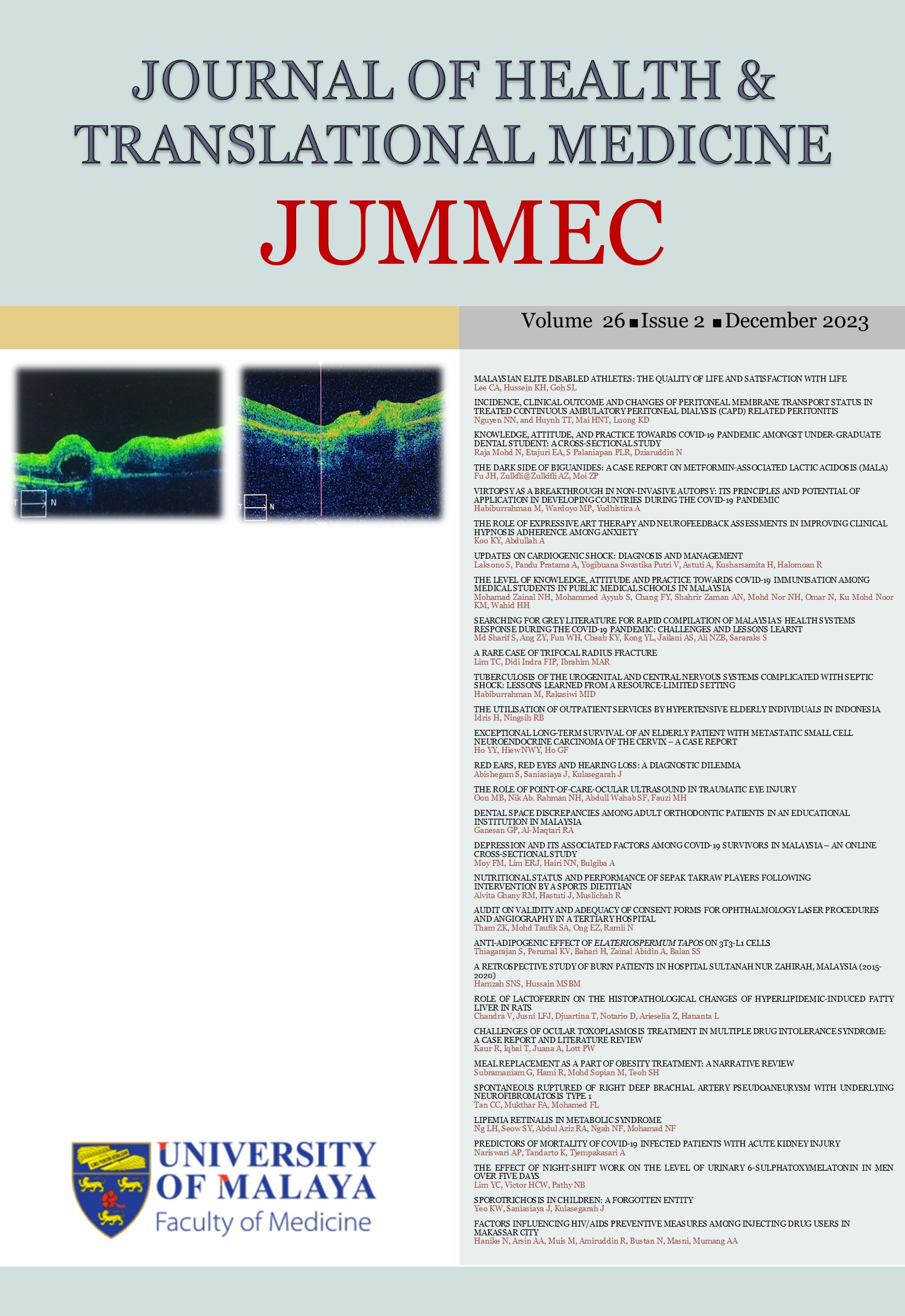VIRTOPSY AS A BREAKTHROUGH IN NON-INVASIVE AUTOPSY: ITS PRINCIPLES AND POTENTIAL OF APPLICATION IN DEVELOPING COUNTRIES DURING THE COVID-19 PANDEMIC
Received 2022-10-11; Accepted 2023-04-11; Published 2023-06-19
DOI:
https://doi.org/10.22452/jummec.vol26no2.5Keywords:
Virtual autopsy (Virtopsy), Computed tomography, Imaging modality, Magnetic resonance imaging, Non-invasive forensic examinationAbstract
Autopsy practice is often limited due to the risk of infection transmission and family objections. As an alternative, virtual autopsy (virtopsy) is proposed, which uses minimally invasive radiology techniques such as postmortem CT scan (PM-CT) and PM-MRI. However, there is a scarcity of literature comprehensively summarizing this topic. Therefore, this review article discusses the advantages and limitations of virtopsy in developing countries during the COVID-19 pandemic, along with ethical issues and a proposed algorithm for postmortem imaging. Virtopsy improves the sensitivity (93%) and specificity (83%) of diagnoses and offers several advantages, such as faster identification, good foreign body detection, three-dimensional reconstruction, and non-invasiveness. Limitations include difficulty in determining infection status and assessing internal organ characteristics, operator dependence, insufficient legal basis, and high costs. During the COVID-19 pandemic, this article compiles twenty-one studies from 2020 to 2022 that used virtopsy to investigate 191 cases of COVID-19 infection resulting in death. The studies were conducted in various countries, with only two developing countries [Brazil (n = 3) and India (n = 1)] reported to have used it. Most of the studies used PM-CT, while others used postmortem ultrasound, PM-MRI, and PM chest X-ray. Virtopsies were mostly performed within 24 hours. The age range of the deceased individuals investigated using virtopsy was between 11 and 99 years old, with males being predominant. Virtopsy was mostly used for triage or screening for conventional autopsy (CA) as well as adjuvant/complement to CA. In summary, virtopsy has potential benefits for developing countries during and after the COVID-19 pandemic, making it a valuable investment despite its limitations.
Downloads
Downloads
Published
Issue
Section
License
All authors agree that the article, if editorially accepted for publication, shall be licensed under the Creative Commons Attribution License 4.0 to allow others to freely access, copy and use research provided the author is correctly attributed, unless otherwise stated. All articles are available online without charge or other barriers to access. However, anyone wishing to reproduce large quantities of an article (250+) should inform the publisher. Any opinion expressed in the articles are those of the authors and do not reflect that of the University of Malaya, 50603 Kuala Lumpur, Malaysia.


